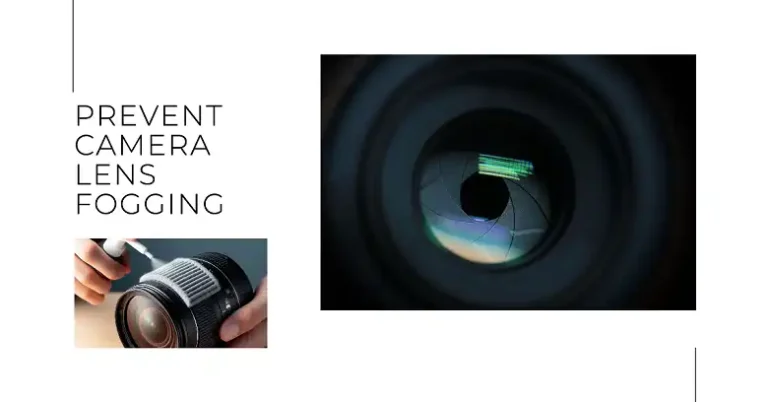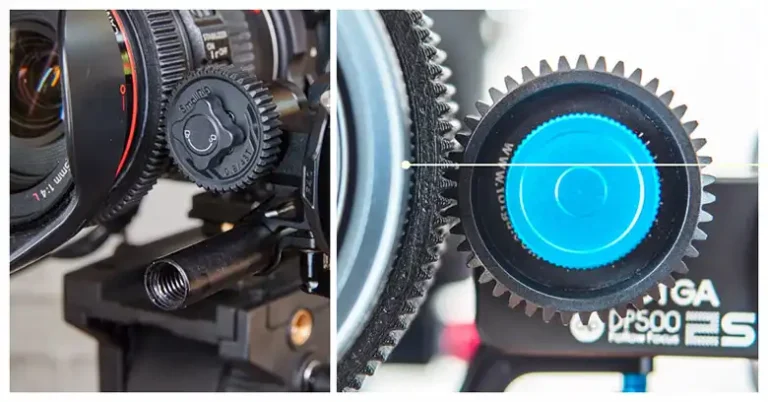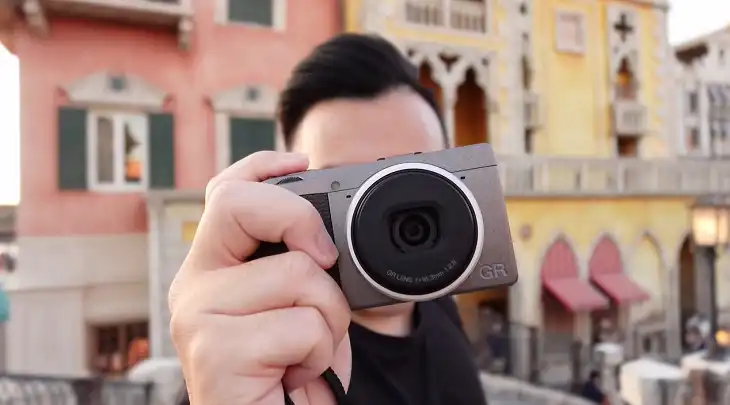24mm vs 50mm Lens | Which Focal You Should Choose
As photographers, the lens we choose plays a crucial role in shaping the final image. One of the most fundamental choices is deciding between a wide-angle or standard focal length. In this article, we’ll talk about the differences between the popular 24mm wide-angle and 50mm standard lenses, helping you make an informed decision for your photography needs.
The 24mm lens offers an expansive field of view, making it ideal for capturing breathtaking landscapes, sweeping architecture, and environmental portraits with a sense of grandeur. On the other hand, the 50mm lens provides a natural, undistorted perspective that closely mimics human vision, rendering it perfect for flattering portraits, precise street photography framing, and product shots with beautiful subject isolation.
Understanding the unique strengths and limitations of these focal lengths will empower you to make informed decisions, ultimately allowing you to create more compelling and intentional images. So, let’s begin.
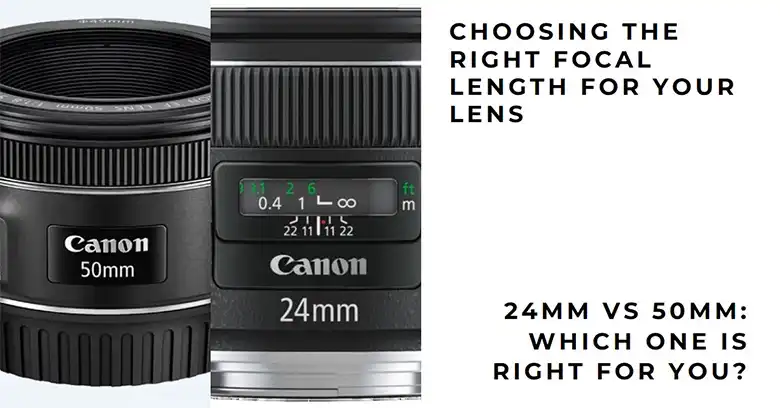
Focal Lengths
The focal length determines the angle of view captured by the lens. A wider focal length like 24mm captures a broader field of view, while a narrower 50mm offers a more focused perspective, similar to human vision.

The Wide-Angle Perspective (24mm)
The 24mm lens is considered a wide-angle, capable of capturing vast landscapes, towering architecture, and environmental portraits with an immersive, expansive feel. This makes it a popular choice for genres like landscape, architecture, and even astrophotography, where capturing a broad swath of the night sky is desirable.
The Standard Perspective (50mm)
On the other hand, a 50mm lens provides a natural, undistorted perspective that closely mimics how our eyes see the world. This makes it an ideal choice for portrait photography, where you want to capture your subject with a realistic, flattering representation. Street photographers also gravitate towards 50mm for its ability to isolate interesting scenes and candid moments.
Lens Distortion and Perspective
One of the key differences between these focal lengths is how they render distortion and perspective.
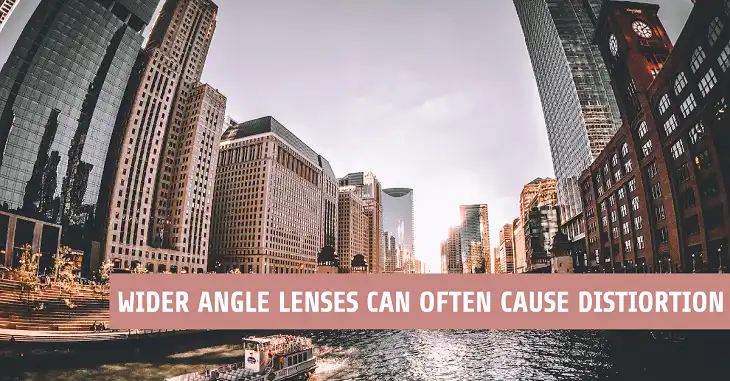
Distortion at 24mm
Wide-angle lenses like the 24mm are prone to distortion, especially at closer focusing distances. This can cause straight lines to appear curved, and objects near the edges of the frame may look stretched or compressed. While this distortion can be corrected in post-processing, it’s essential to be mindful of its effects during shooting.
The Natural Perspective of 50mm
In contrast, the 50mm lens delivers a natural, undistorted perspective that accurately represents the scene as our eyes perceive it. This makes it an excellent choice for capturing subjects without any unwanted distortion, ensuring a realistic and flattering depiction.
However, some photographers intentionally use the distortion of a 24mm lens creatively, exaggerating perspectives for dramatic effect or creating a sense of dynamism in their compositions.
Typical Use Cases
Understanding the ideal use cases for each focal length is crucial for making the most of their unique characteristics.
When to Use a 24mm Lens
The 24mm excels in scenarios where you need to capture vast landscapes, sweeping cityscapes, or expansive interiors. Its wide field of view also makes it an excellent choice for environmental portraits, allowing you to include the subject’s surroundings for added context.
Photojournalists and street photographers often rely on a 24mm for its ability to capture spontaneous moments in tight spaces or crowded environments.
When to Use a 50mm Lens
The 50mm lens shines in portrait photography, where its natural perspective and ability to isolate the subject make for flattering and compelling images. Its narrower field of view also makes it well-suited for street photography, allowing you to frame candid scenes with precision.
Product photographers often turn to the 50mm for its undistorted rendering and versatility in capturing accurate, detailed shots of their subjects.
Depth of Field and Bokeh
Focal length plays a significant role in determining the depth of field and the quality of the out-of-focus areas, commonly known as bokeh.
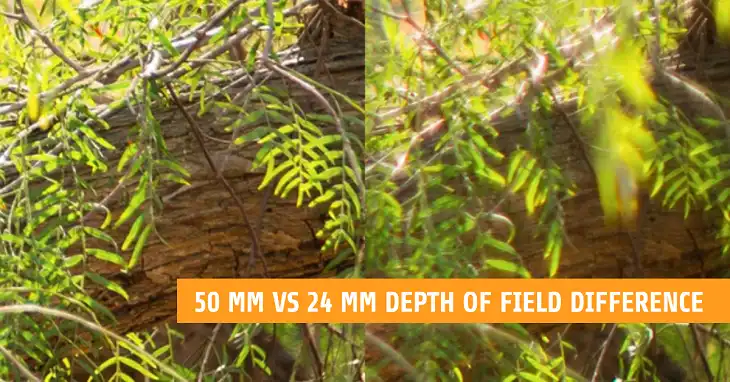
Depth of Field Differences
The 24mm lens, with its wider angle of view, inherently has a deeper depth of field, meaning more of the scene will appear in focus at the same aperture setting compared to a 50mm lens. This can be advantageous for landscapes or architectural photography, where you want to maintain sharpness throughout the image.
On the other hand, the 50mm lens produces a shallower depth of field, allowing you to achieve a creamy, blurred background with excellent subject separation. This makes it an ideal choice for portrait and product photography, where you want to draw the viewer’s attention to your subject by smoothly blurring the background.
Achieving Creamy Bokeh with 50mm
To maximize the bokeh effect with a 50mm lens, shoot at wider apertures like f/1.8 or f/2.8, if available. This will blur the background even more, creating a beautiful, soft bokeh that separates your subject from the surroundings.
Lens Specifications and Performance
While focal length is a primary consideration, it’s essential to evaluate other lens specifications and performance characteristics to make an informed decision.
Common Lens Specifications
Here are some key specifications to consider:
- Maximum Aperture: Wider apertures like f/1.8 or f/1.4 on 50mm lenses allow for better low-light performance and shallower depth of field.
- Image Stabilization: Built-in stabilization can help reduce camera shake, especially in low-light situations.
- Autofocus Motor: Faster, quieter autofocus motors ensure smooth and accurate focusing, especially for moving subjects.
Lens Sharpness and Aberrations
Both 24mm and 50mm lenses from reputable manufacturers generally deliver excellent sharpness and image quality, but it’s worth comparing specific lens models. Pay attention to reviews and sample images to assess sharpness, as well as potential issues like vignetting (darkened corners) or chromatic aberration (color fringing).
Autofocus Performance
While most modern lenses offer fast and accurate autofocus, the performance can vary between focal lengths and specific lens models. For example, wider aperture 50mm lenses may struggle more with focus accuracy in low light compared to 24mm lenses with a deeper depth of field.
Handling and Ergonomics
The physical characteristics of a lens can impact your shooting experience, so it’s worth considering factors like size, weight, and handling.
Size and Weight
Generally, 24mm lenses are more compact and lightweight, often earning the moniker “pancake lenses.” This makes them ideal for travel and street photography, where portability is key.
In contrast, 50mm lenses, while still relatively small, tend to be slightly larger and heavier due to their more complex optical designs and wider maximum apertures.
Manual Focus Operation
If you frequently rely on manual focusing, take note of the focus ring operation on each lens. Some photographers prefer the longer rotational throw and precise feel of manually focusing with a 50mm lens, while others may find the wider focus ring on certain 24mm lenses more comfortable.
Lens Hoods and Filters
Most lenses in these focal lengths will have filter threads for adding accessories like lens hoods or filters. However, the filter thread size may differ, so be mindful of compatibility if you plan to use existing filters.
Lens hoods are particularly important for minimizing flare and protecting the front element, especially with wide-angle lenses like the 24mm, which can be more prone to flare and light artifacts.
Pricing and Value Offered
Cost is often a consideration when choosing photography gear, and prime lenses like the 24mm and 50mm generally offer excellent value compared to more expensive zoom lenses.
Typical Cost Ranges
Entry-level 50mm prime lenses from major manufacturers like Canon, Nikon, or Sony can often be found for around $200 or less, making them an affordable option for those on a budget.
Quality 24mm prime lenses may cost slightly more, typically ranging from $300 to $600 for well-regarded models from first-party manufacturers.
Performance vs. Cost
While more expensive, premium 50mm lenses with wider maximum apertures (like f/1.4 or f/1.2) can deliver exceptional low-light performance and subject isolation, the cost may not be justifiable for everyone.
In many cases, the more affordable 50mm f/1.8 lenses can provide excellent value, delivering impressive image quality and performance for the price.
When it comes to 24mm lenses, the added cost often comes from advanced optical designs and coatings to minimize distortion and aberrations, which may be worth the investment for those who prioritize wide-angle image quality.
Final Thoughts
The 24mm lens excels at capturing vast landscapes, sweeping architecture, and environmental portraits, offering an immersive, wide perspective. However, it can introduce distortion and may struggle with subject isolation in tighter compositions.
Conversely, the 50mm lens delivers a natural, undistorted perspective that closely mimics human vision, making it an excellent choice for portraits, street photography, and product shots. Its narrower field of view allows for precise framing and beautiful subject separation with a shallow depth of field.
Rather than seeking a “better” lens, consider building a versatile kit with both focal lengths to have the right tool for any shooting situation. Experiment with each lens, understand its strengths and weaknesses and develop a personal preference for when to reach for the 24mm or the 50mm

